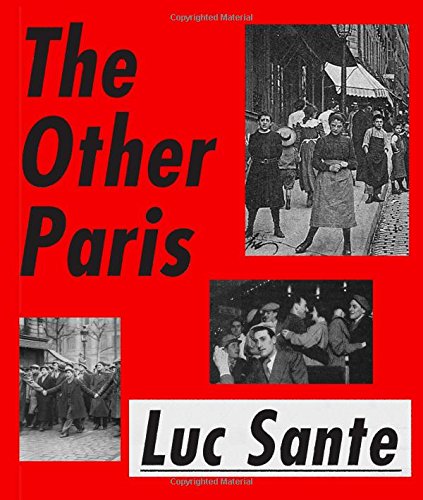
The Other Paris
کتاب های مرتبط
- اطلاعات
- نقد و بررسی
- دیدگاه کاربران
نقد و بررسی

August 10, 2015
This vivid and thorough compendium describes the history of the Paris neighborhoods historically occupied by the poor, the dirty, and other undesirables. Focusing primarily on the 19th and 20th centuries, Sante zigzags through the arrondissements, touring the history of the hospitals, bordellos, cafes, and drinking establishments of the poor. He takes readers into the noisy arcades, past the guillotine, and by the cour des miracles, a cluster of dilapidated houses beyond the reach of the law. Nearly every page includes beautiful old photos, drawings, and accompanying images in the margins that help tell the story of the often unmentioned side of Paris. In a chapter on insurgents, Sante recounts the story of an anarchist named Ravachol, who planted two bombs (that killed no one) in March 1982 but was so feared that he was blamed for a long list of unsolved crimes and then publicly executed. Sante, a flaneur, does not want to glamorize the past but rather gives readers an intense “reminder of what life was like” when cities were wild and savage and survival was uncertain. The sheer volume and variety of the obscure stories gathered here make this eclectic history a rambunctious and wholly entertaining guide to Paris and an educational experience worth savoring. 377 illus.

June 15, 2015
Sante (Folk Photography: The American Real-Photo Postcard, 1905-1930, 2009, etc.) explores how the neighborhoods of Paris have defined the city and perhaps created the true Parisian. The author begins and ends with the flaneur, who wanders throughout the city, engaging the denizens and availing himself of the complete education available from life primarily conducted in public. He sees the palimpsest of a city centuries old that in many ways doesn't change at all. There are quartiers or neighborhoods where unexplained recurrences are the norm, and many are devoted to a single specialty, whether it's street performers, prostitutes, pickpockets, or beggars. They have been self-contained places where generations spent their entire lives, living, working, and dying. Many succumbed to plague, cholera, war, or absinthe. All that changed when Baron (an assumed title) Haussmann became prefect of the Seine in 1853 and proceeded to remake the city. He built bridges and a new sewer system, established the Bois at Boulogne and Vincennes, improved lighting, built new public urinals-and all of the progress destroyed the quartiers, a process that continued well into the 20th century. Throughout this rich book, Sante shares the exuberance of the French language with strings of slurs, insults, and pejorative jargon. The last city wall of 1841 established "the zone" (now Peripherique) outside the city, which became a catchall slum exempt from taxes or opening to the suburbs. The book bogs down somewhat as the author recounts a diverse population-including vagrants, whores, actors, criminals, communards, revolutionaries, and anarchists-but he describes them without condescension or reproach, just appreciation of the city they built. Taking Paris to the desperate years after World War II, Sante sees continuance of the "historical regurgitation, when all the ghosts came out maybe for a last dance." All who love Paris will love this book.
COPYRIGHT(2015) Kirkus Reviews, ALL RIGHTS RESERVED.

August 1, 2015
When thinking about Paris, places such as the Eiffel Tower, the Louvre, and Notre Dame come first to mind. Equally part of the city's unique character, however, is its notorious underbelly. For centuries, both before and after Baron Hausmann and other urban planners, a far less sanitized version coexisted and in many cases defined the City of Light. This was the Paris of prisons, brothels, workhouses, cabarets, dance halls, Les Halles, bohemians, the urban poor, and an unpredictable and often volatile rabble. Now mostly eradicated or pushed to the outer perimeters of the city, the remnants of a disreputable past are still faintly visible to those who care to look. Sante (writing and photography, Bard Coll.; Low Life) takes the role of flaneur, walking through primary source documents, firsthand accounts, and more than 300 images of the streets of Paris to tell its tale and remind readers of what life was like for residents before gentrification. VERDICT A fascinating stroll through a vanished, wild past. Recommended for general readers. [See Prepub Alert, 4/20/15.]--Linda Frederiksen, Washington State Univ. Lib., Vancouver
Copyright 2015 Library Journal, LLC Used with permission.

September 15, 2015
Sante charts the evolution of Paris, from the vivid and savage and uncontrollable collection of neighborhoods that comprised it in the Middle Ages to the one Georges-Eugene Haussmann restructured in the 1850s that gutted and rooted out the unsavory and created the boulevard-structured coherence so iconic today. Ultimately, Haussmannization destroyed not only the physical and industrial chaos of the city but its social fabric as well. Before, different classes lived out their lives side by side, within their own self-sufficient city-districts. With the help of extensive research and the voices of Victor Hugo, Baudelaire, Balzac, and anonymous pamphleteers, Sante vividly captures this other Paris: the Bohemian underworld of musicians, artists, and prostitutes; the poor; alcohol consumption; public health; crime; carnival; and revolution upon revolution. Though the writing is somewhat disorganized, The Other Paris is immersive and enjoyable. The abundant pictures are fascinating. Recommended for those with a good foundation of French history. The back-and-forth look at the many monuments is great for history-minded travelers.(Reprinted with permission of Booklist, copyright 2015, American Library Association.)

























دیدگاه کاربران